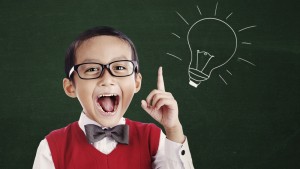 When you’re having problems understanding an idea, or conveying it to someone else, then building a mind map can often help. Just the process of defining the core concepts and showing how they’re related will often make things very much clearer.
When you’re having problems understanding an idea, or conveying it to someone else, then building a mind map can often help. Just the process of defining the core concepts and showing how they’re related will often make things very much clearer.
If you’re familiar with the basics then creating a map doesn’t require very much, of course -- a pen and paper will probably do. But if you’re a beginner to this kind of outlining approach then a little software-based assistance should help to make things clearer, and while it has some problems, InfoRapid KnowledgeBase Builder is an interesting place to get started.
The program is a relatively small download (under 5MB), for instance. It’s free for personal use. And there’s no adware, no installation hassles, in fact no installation at all: just unzip the download somewhere and you’re ready to begin.
KnowledgeBase Builder launches with a sample mind map covering the process of troubleshooting a web server. And at first this just looks like a more attractive flowchart, with questions like "Is it out of memory?" and "Is it a software failure?", and yes/ no arrows leading from these to some other step. But actually this is just the start.
The example map looks basic, yes, but this is only because the initial view is hiding its complexity from you. If you click one of the questions on the map -- "Is it out of memory?", say -- then the program will zoom in on that point, display an extra question, and other issues which you might want to consider ("Is the CPU overloaded?"). Clicking new questions will do the same thing, and the whole map quickly becomes an interactive tool, leading you through the process to help figure out whatever you might need to do.
 Not every mind map requires this dynamic approach, of course, but if you’d prefer a more static view then that’s possible, too. Just keep clicking "More Details" at the top of the map pane and KnowledgeBase Builder will expand the map, showing more and more information, until it’s all visible (subject to your screen size, anyway).
Not every mind map requires this dynamic approach, of course, but if you’d prefer a more static view then that’s possible, too. Just keep clicking "More Details" at the top of the map pane and KnowledgeBase Builder will expand the map, showing more and more information, until it’s all visible (subject to your screen size, anyway).
If the example map doesn’t interest you, however it’s displayed, then KnowledgeBase Builder has something else you can try. Click File > New, then Tools > Generate Site Map, point the program at www.google.com, and in a few seconds you’ll have a map showing the initial pages on the Google site. This can be excellent way to visualise site structure, especially as it’s so dynamic: you can click on a page, move to it, see all the pages available from that link, and more.
And, of course, once you understand how this all works then you can begin to enter the objects and relationships necessary to build maps of your own. Although this may take quite some time; there are lots of options here, and vanishingly little help.
One major issue with all of this is there’s no way to export your maps in a standard format that others can view them immediately (you can save the details in a CSV file, but that probably won’t help you very much).
Still, you can show people a map on your own system. And as the KnowledgeBase Builder is just a single executable, you could always zip up your own database with a copy of the program if you need others to see it. Plus the maps look so good that even just printed copies may be useful. So, while there limitations here, if you’ve any interest in this kind of tool then InfoRapid KnowledgeBase Builder definitely deserves a closer look.
Photo Credit: Creativa/Shutterstock

